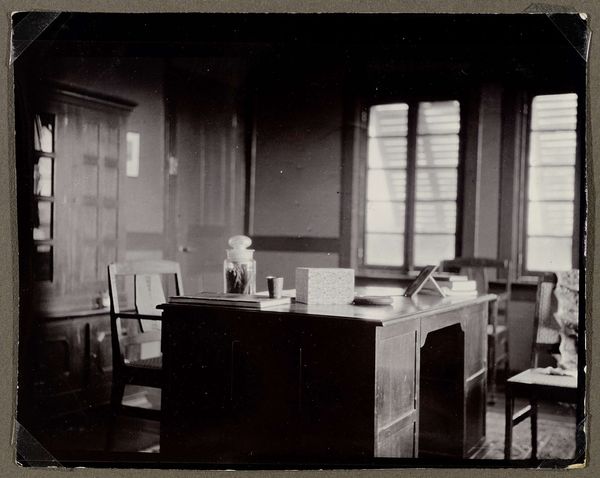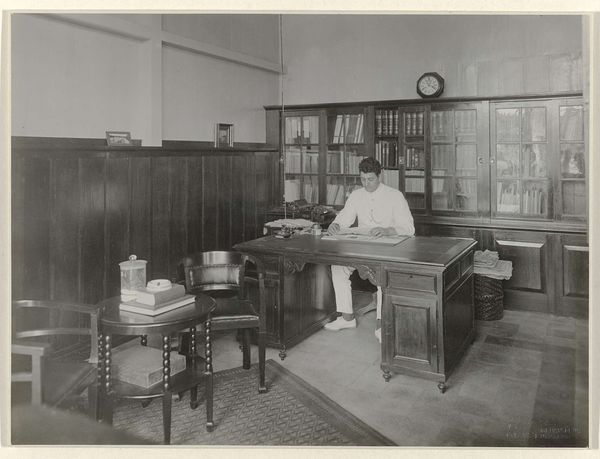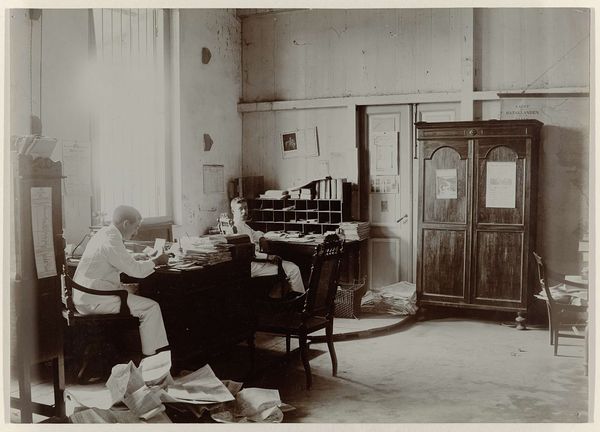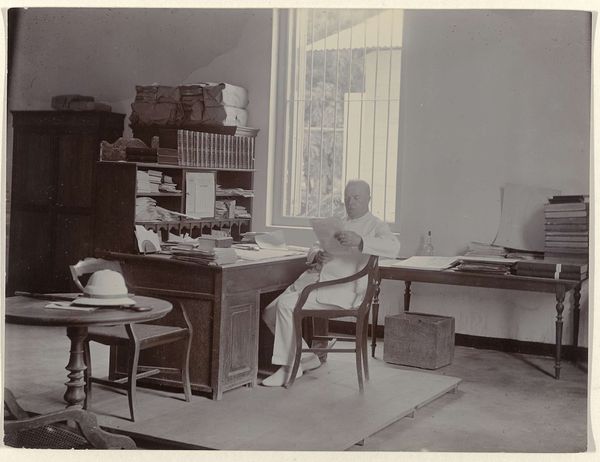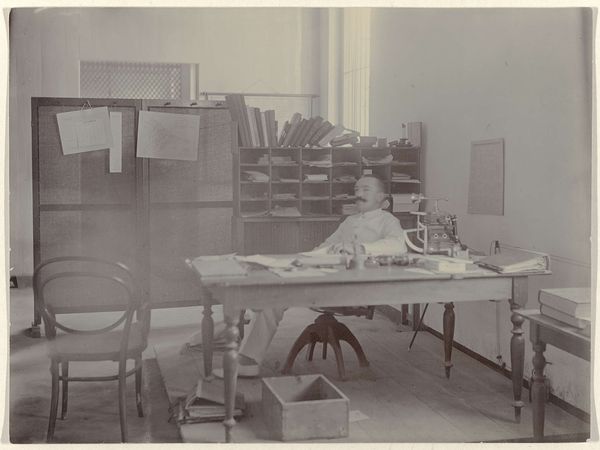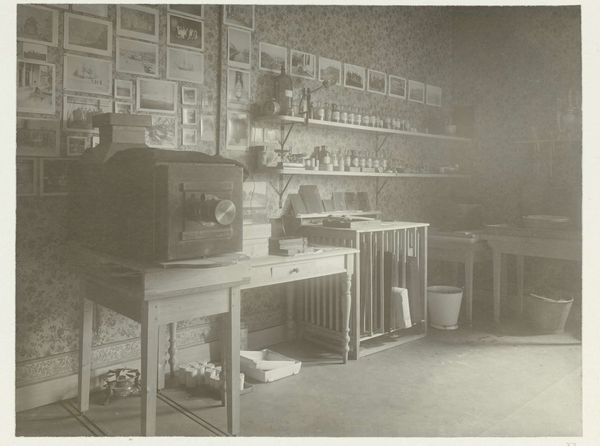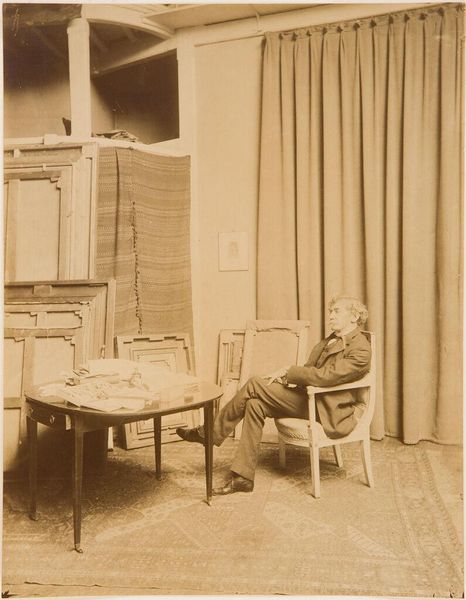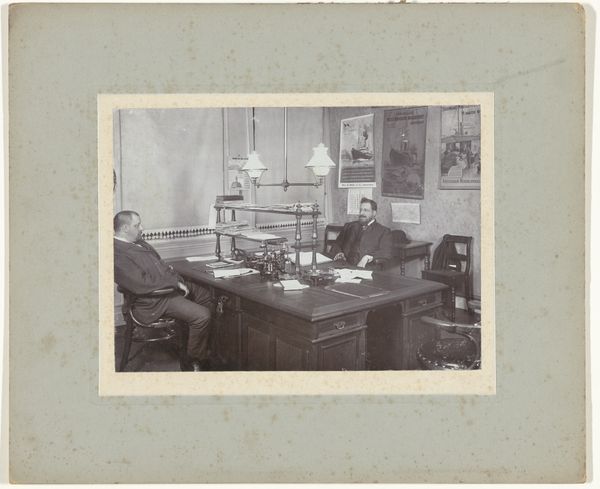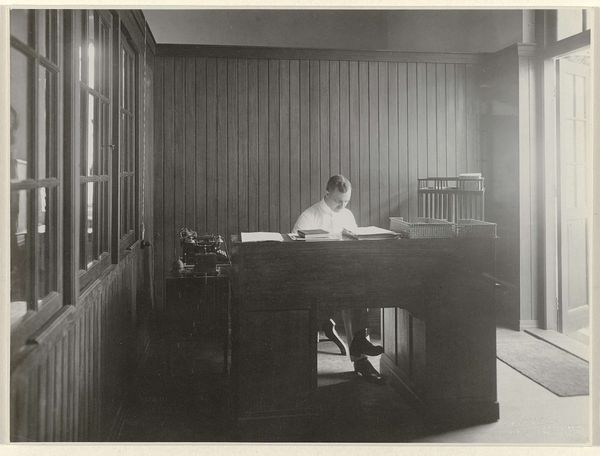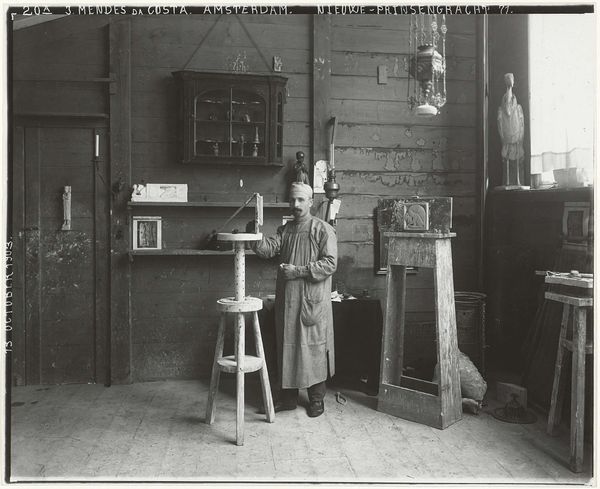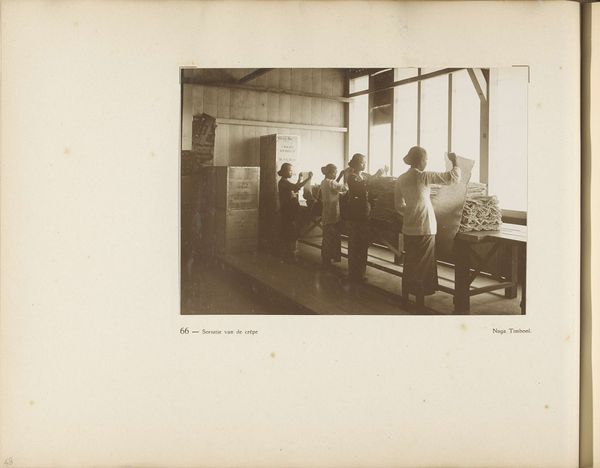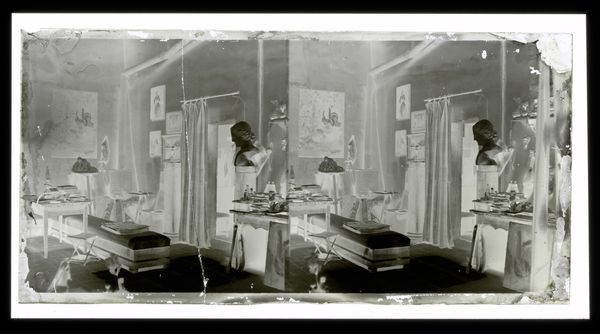
Hig. H. Tromp, de eerste Ingenieur-Directeur der Boekit-Asam-Steenkolenmijnen van Mei 1919 tot Januari 1922 1921 - 1922
0:00
0:00
print, photography, gelatin-silver-print
#
portrait
#
print photography
# print
#
archive photography
#
photography
#
historical photography
#
gelatin-silver-print
#
realism
Dimensions: height 279 mm, width 392 mm
Copyright: Rijks Museum: Open Domain
Curator: This photograph, a gelatin-silver print from around 1921, portrays Hig. H. Tromp, an engineer-director in the Boekit-Asam coal mines. Editor: It has such a formal and almost clinical feel, especially with the dark wood paneling and Mr. Tromp's serious expression. What stories do you think it holds beyond a simple portrait? Curator: Precisely. The stark realism serves as a powerful entry point to discuss the social and political dynamics of the colonial era. Tromp was managing coal mines in, what was then, the Dutch East Indies. What do you notice about the staging of the portrait itself? Editor: The subject seems very proper, he's in what appears to be his office with the dark wood paneling, almost as if a stage. Curator: Indeed. Consider the power dynamics at play: a European engineer overseeing Indonesian resources. The formality we see, the deliberate composition, speaks to control, authority, and the colonial project itself. It highlights the intersection of industry, colonialism, and the exploitation of natural resources and people. Do you see a contrast in how Tromp is presented and what the historical context suggests? Editor: Yes, while the portrait seems to aim for respectability, it also reveals an uncomfortable truth about the era. It prompts a dialogue about the legacy of colonialism and its impact on both the colonizer and the colonized. Curator: Exactly! It's a visual record but also an artifact of colonial power, encouraging us to examine our own biases and assumptions when interpreting historical images. Editor: I've definitely learned to look beyond the surface of this photograph, to consider the historical context. Thanks. Curator: Likewise! Reflecting on images like this deepens our understanding of both art history and world history.
Comments
No comments
Be the first to comment and join the conversation on the ultimate creative platform.
